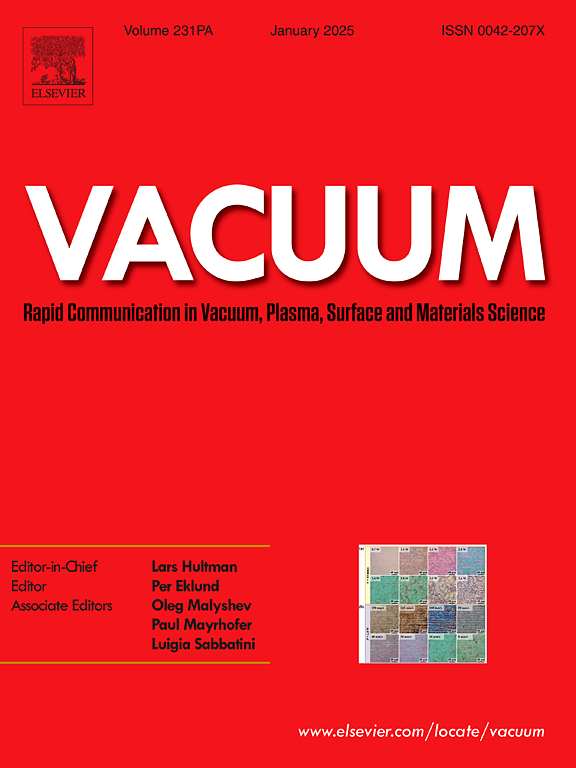A flexible graphene-aluminum composite thermal strap with high thermal conductivity: two-step vacuum welding process optimization and interfacial microstructure control
IF 3.9
2区 材料科学
Q2 MATERIALS SCIENCE, MULTIDISCIPLINARY
引用次数: 0
Abstract
The joining of graphene and metal to prepare a thermal strap is an effective method to enhance the heat dissipation capability of high heat-generating devices in spacecraft applications. A two-step vacuum welding method was employed to fabricate the flexible graphene-aluminum composite thermal strap. Firstly, multi sheets graphene films were brazed using AgCu4.5Ti filler metal, resulting in a typical interfacial microstructure characterized by AgCu4.5Ti/Cu(s,s) + Ag(s,s)/TiC/graphene. In addition, by studying the capillary filling behavior of AgCu4.5Ti between graphene films under various brazing temperatures and time, a reliable AgCu4.5Ti/graphene joint was obtained at 1123 K for 10 min. Secondly, the terminal Ni(P)-deposited 6061 aluminum alloy was soldered to the graphene films assembly brazed with AgCu4.5Ti using Sn63Pb37 solder. The interfacial microstructures of the Sn63Pb37/Ni(P)-deposited 6061 aluminum alloy joints transformed from Ni3Sn4+Ni3P to Ni2SnP + Ni2P with increasing soldering temperature and further transformed to Ni2SnP as the soldering time increased. The optimal soldering parameters were identified as 573 K for 10 min. Flexibility and thermal performance analyses demonstrated that the flexible graphene-aluminum composite thermal strap exhibited excellent flexibility and achieved a thermal conductivity of 1345.52 W m−1 K−1.
高导热柔性石墨烯-铝复合热带:两步真空焊接工艺优化及界面微观结构控制
石墨烯与金属的连接制备热带是提高航天器中高发热器件散热能力的有效方法。采用两步真空焊接法制备柔性石墨烯-铝复合热带。首先,采用AgCu4.5Ti填充金属钎焊多层石墨烯薄膜,得到了典型的AgCu4.5Ti/Cu(s,s) + Ag(s,s)/TiC/石墨烯界面微观结构。此外,通过研究不同钎焊温度和时间下AgCu4.5Ti在石墨烯薄膜间的毛细填充行为,在1123 K条件下获得了可靠的AgCu4.5Ti/石墨烯接头。其次,采用Sn63Pb37焊料将Ni(P)沉积的6061铝合金末端焊接到AgCu4.5Ti钎焊的石墨烯薄膜组件上。随着焊接温度的升高,Sn63Pb37/Ni(P)沉积6061铝合金接头的界面组织由Ni3Sn4+Ni3P转变为Ni2SnP + Ni2P,随着焊接时间的延长,界面组织进一步转变为Ni2SnP。最佳焊接参数为573 K,焊接时间为10 min。柔性和热性能分析表明,柔性石墨烯-铝复合热带具有良好的柔韧性,导热系数为1345.52 W m−1 K−1。
本文章由计算机程序翻译,如有差异,请以英文原文为准。
求助全文
约1分钟内获得全文
求助全文
来源期刊

Vacuum
工程技术-材料科学:综合
CiteScore
6.80
自引率
17.50%
发文量
0
审稿时长
34 days
期刊介绍:
Vacuum is an international rapid publications journal with a focus on short communication. All papers are peer-reviewed, with the review process for short communication geared towards very fast turnaround times. The journal also published full research papers, thematic issues and selected papers from leading conferences.
A report in Vacuum should represent a major advance in an area that involves a controlled environment at pressures of one atmosphere or below.
The scope of the journal includes:
1. Vacuum; original developments in vacuum pumping and instrumentation, vacuum measurement, vacuum gas dynamics, gas-surface interactions, surface treatment for UHV applications and low outgassing, vacuum melting, sintering, and vacuum metrology. Technology and solutions for large-scale facilities (e.g., particle accelerators and fusion devices). New instrumentation ( e.g., detectors and electron microscopes).
2. Plasma science; advances in PVD, CVD, plasma-assisted CVD, ion sources, deposition processes and analysis.
3. Surface science; surface engineering, surface chemistry, surface analysis, crystal growth, ion-surface interactions and etching, nanometer-scale processing, surface modification.
4. Materials science; novel functional or structural materials. Metals, ceramics, and polymers. Experiments, simulations, and modelling for understanding structure-property relationships. Thin films and coatings. Nanostructures and ion implantation.
 求助内容:
求助内容: 应助结果提醒方式:
应助结果提醒方式:


